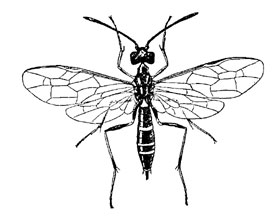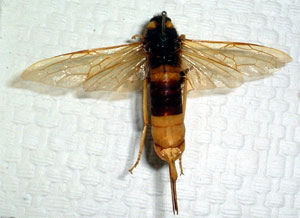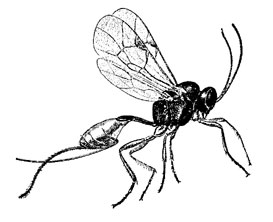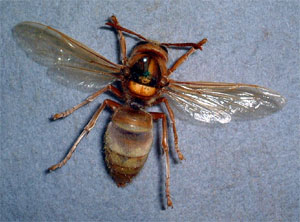

Order Hymenoptera - Bees, Wasps, Ants, Ichneumons (Top)
|
Suborder Symphyta
|
  |
Suborder Apocrita
|
  |
Hymenoptera are considered to be the order of most benefit to humans, not only as pollinators for the flower, fruit and vegetable industries, but also as honey producers, in pest control (even of rats) and are even used medicinally as stitches (leafcutter ants), and for the antiseptic properties of formic acid
The sting of the group Aculeata is a modified ovipositor, used in defence and to kill and paralyse prey. Luckily the world's largest bee, the King Bee or Wallace's Giant Bee (Chalicsdoma pluto), does not have the barbed sting of most bees, and its sting is therefore less painful.
The largest wasps are Tarantula hawkwasps of the Pepsis genus, which can reach 6.7cm in length, and provision their larvae with paralysed tarantulas.






